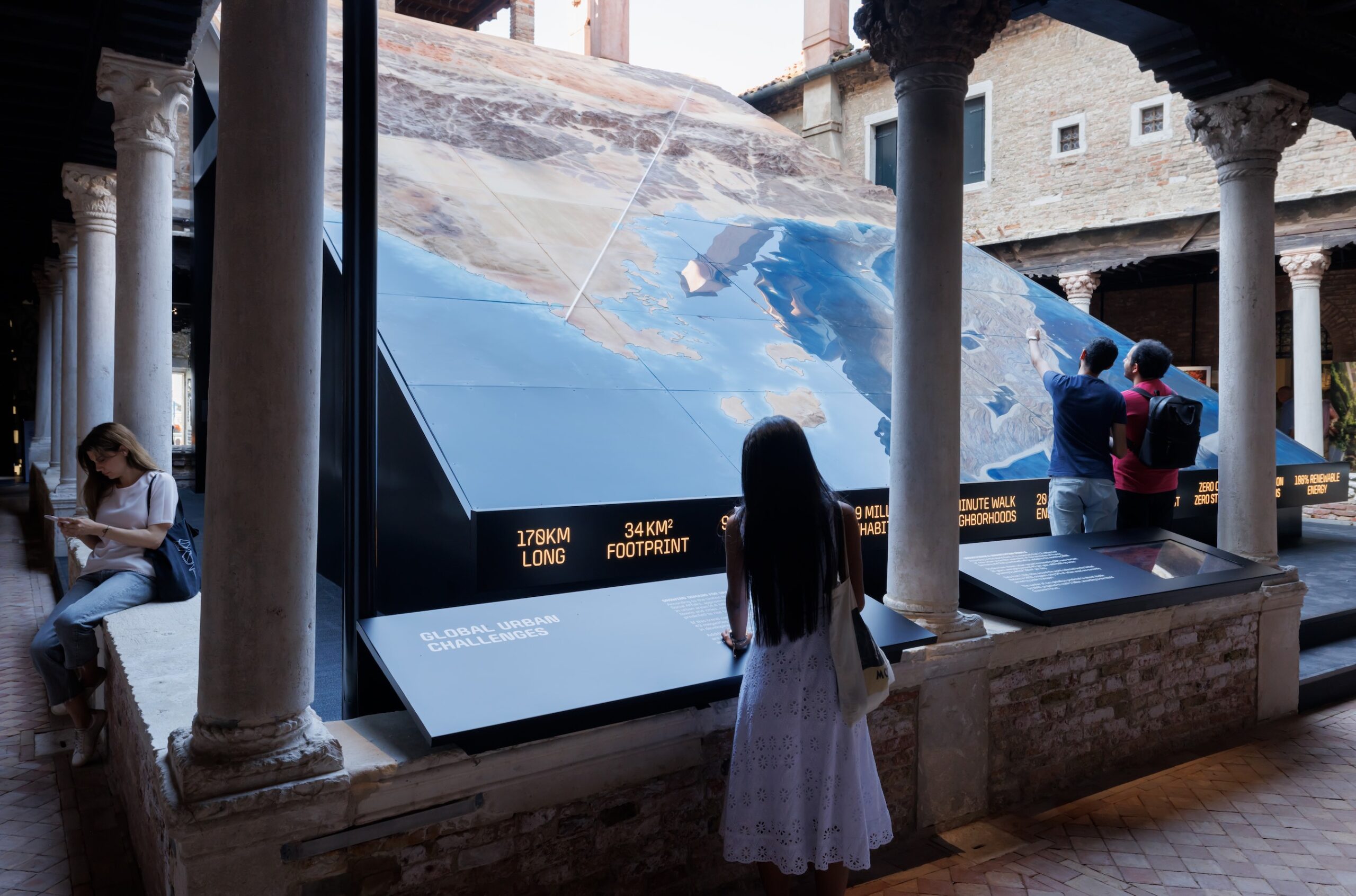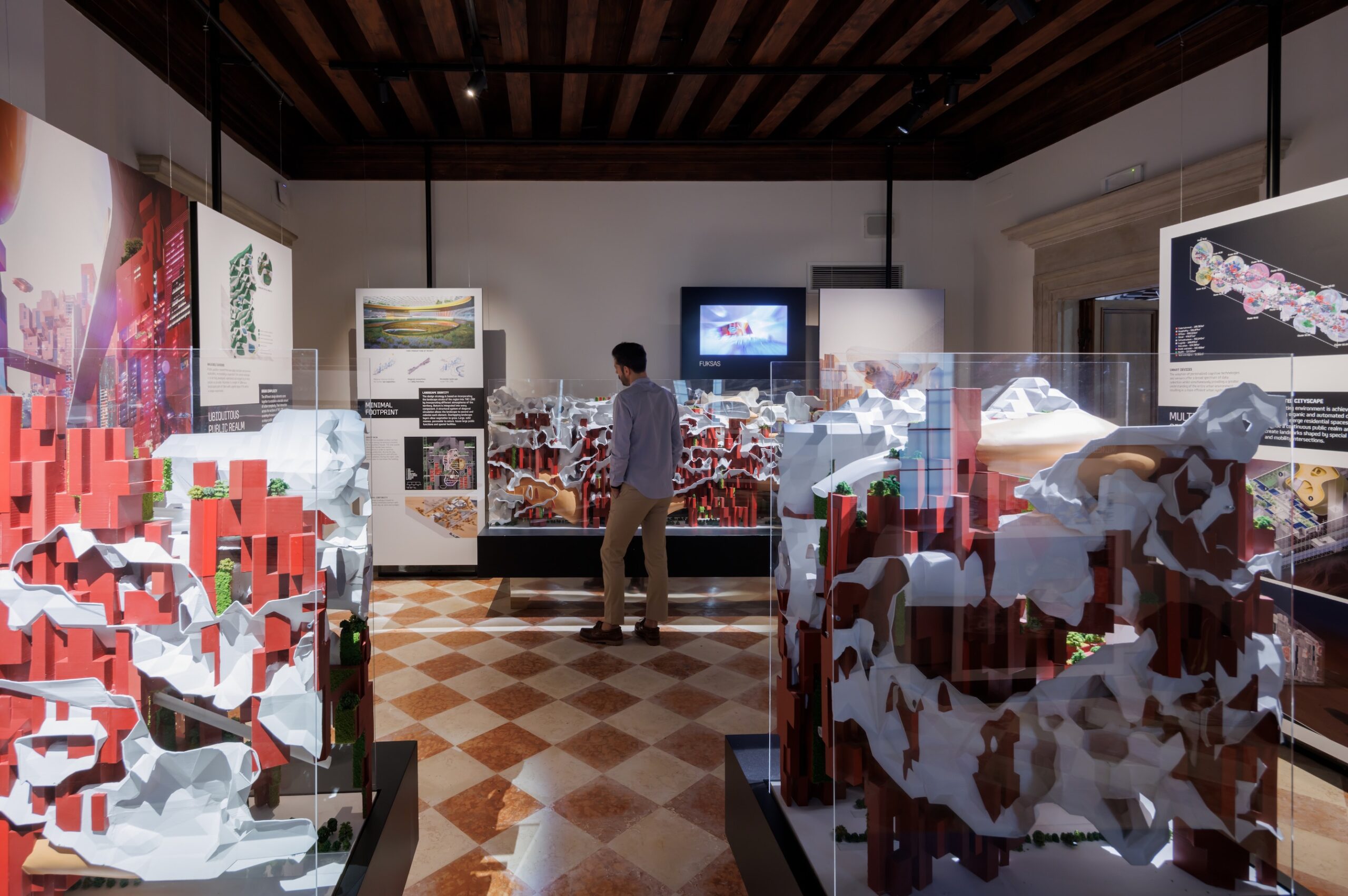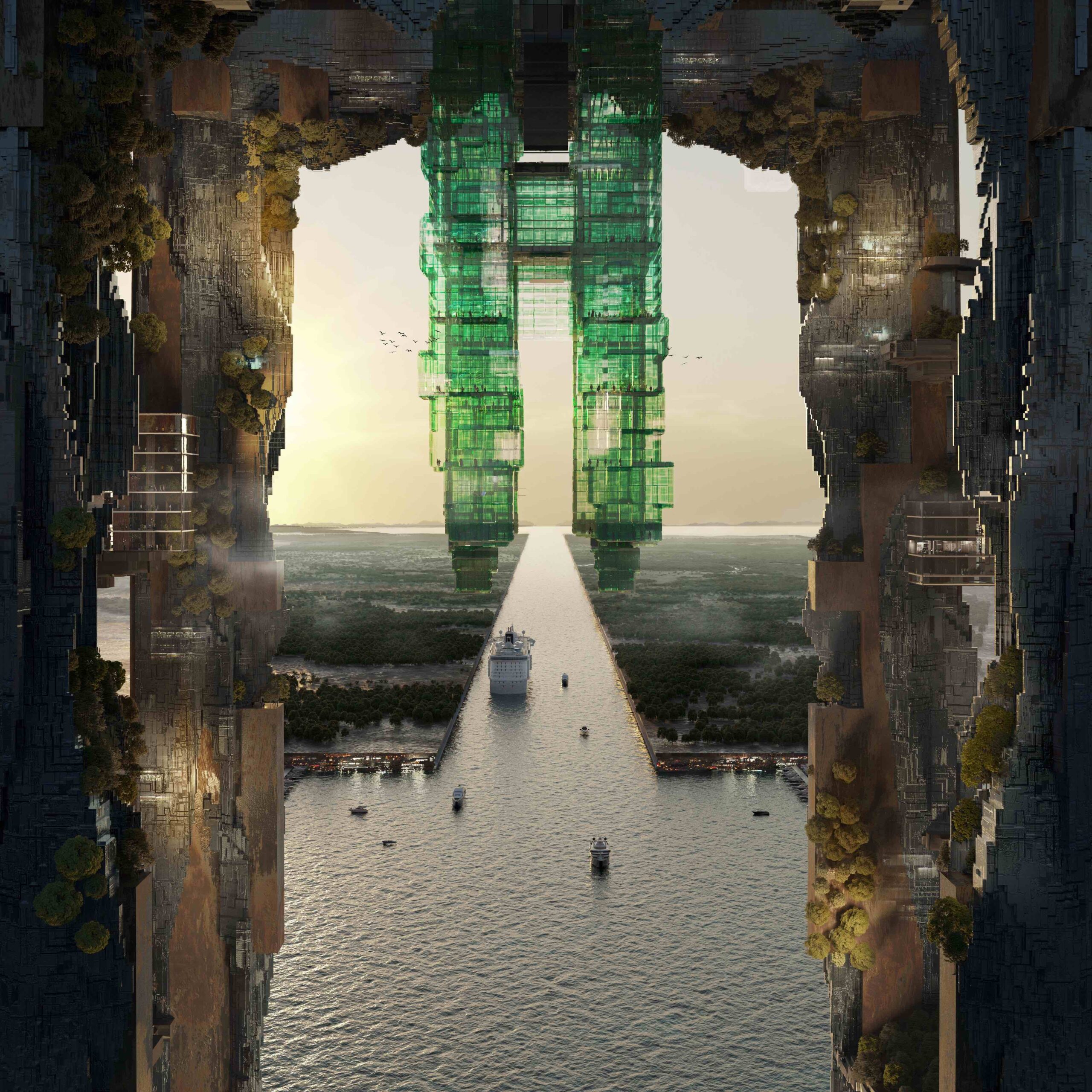What does the actualisation of this sci-fi city entail? The future of urban living, or something beyond?
 Photography by Iwan Baan featuring Zero Gravity Urbanism – Principles for a New Livability at the Abbazia di San Gregorio, Venice
Photography by Iwan Baan featuring Zero Gravity Urbanism – Principles for a New Livability at the Abbazia di San Gregorio, Venice
Words by Dawn Hung
The Line, a 170-kilometre car-free linear cognitive city, is one of the ten architectural projects under NEOM, an initiative of HRH Crown Prince Mohammed bin Salman. Much debate has circled around the feasibility of this flagship city in the special economic region of Saudi Arabia, nestled in the northwest of the country. The project, which aims to be a panacea for future urbanisation, consists of two blades of 500-metre high linear skyscrapers spaced 200 metres apart. Its scale and ambition corroborate the old saying: size does matter.
Is it real? Construction on the vast site began in April 2022, and the team has unveiled the latest progress photo of the Hidden Marina, a 3.2-kilometre embryonic section of The Line, which is scheduled to be completed 7 years later to coincide with the timeline of the Saudi Vision 2030. This important milestone can be regarded as a draw to attract further investment to the whole NEOM project, with a total budgeted figure of $500 billion.
How can the project acquire the public’s trust with its counterintuitive urban planning? Tarek N. Qaddumi, Executive Director of NEOM Urban Planning, underlines the world elites’ participation, and how NEOM can be the cradle of a totally new future. He says, ‘We have a group of 4000 of the world’s best from various fields. Our president of NEOM University, who is already assigned and has a large team, came from the University of Illinois. We also have the head of our sports, who headed the Olympics for London.’
 Photography by Iwan Baan featuring Zero Gravity Urbanism – Principles for a New Livability’ at the Abbazia di San Gregorio, Venice
Photography by Iwan Baan featuring Zero Gravity Urbanism – Principles for a New Livability’ at the Abbazia di San Gregorio, Venice
Aside from the quality of synergy and conversations involved, the 100-plus-person urban planning team works with all of the best architects in the world, along with various consultants. The Line will also be built in an industrialised manner like a car factory (i.e., everything is being designed and prefabricated as parts of a kit). Qaddumi says, ‘If we were to construct this in traditional ways, I totally agree that it will never happen by 2030.’
In 2030, we’ll know whether The Line is merely a passing fad or a paradigm shift. Yet, what is the endgame for The Line? With the actualisation of the project and expertise consolidated, NEOM can easily position itself at the technological forefront of urban planning and architectural knowledge, contributing to the country’s soft power output, and further diversifying the Kingdom’s economy, in addition to the announced focuses on leisure tourism and property development.
The world is ever-changing, but some fantasies endure, such as the desire for perpetual life and eternal youth. I may have misinterpreted the exhibition title ‘Zero Gravity Urbanism – Principles for a New Livability’ at the very beginning, a showcase hosted at the historic Abbazia di San Gregorio in Venice, initiated by NEOM. Before seeing various modular proposals from the world’s leading architects, such as Cook Haffner Architecture Platform and Studio Fuksas, my attention was drawn to the giant map in the central courtyard, showing The Line piercing through three distinct ecological zones, from coastal desert to the Paleozoic upper valley, through Precambrian mountains.
 Photography courtesy of NEOM
Photography courtesy of NEOM
Although the exhibition title tries to suggest The Line’s radically smaller footprint, by comparing it to traditional sprawling urbanisation models, another interpretation of the title might suggest The Line could be a prelude to a new space age with its engineering and architectural approach to extreme weather patterns, and a rather compact yet self-sufficient internal 3D masterplan. This expertise might just be the foundation needed for possible extraterrestrial colonisation and space settlement.
For sure, I presume the technical and engineering know-how is transferable. But if this is true, there is an extra value on top of the whole project and the country’s softpower output. Qaddumi replies, ‘Often times, our CEO refers to NEOM as analogous to the work that was done at NASA. And in fact, we know today that NASA was the beginning of a trickle-down effect that created science and a world of innovation that the world would not have even thought of unless we had pushed the boundaries so far.’
‘In that sense, NEOM, and The Line in particular, is very much in the same vein in the sense that it is doing what it does because it is an absolutely logical, absolutely scientifically proven way to build a new city, pushing the boundaries in everything that touches a city: education, sports, utilities, water, and energy. We go to the best in the world and partner with them. We are working together on things that are not complete and are in beta, and we’re pushing them to innovate even further.’
‘Given The Line’s interesting geographic locations, there would be certain speculation about what other technologies developed within the line could be transferable to other possible scenarios. It can be something to move to build another Eden Project. It might be something within an aerial space project, if you try to extrapolate much further and transfer all of these skillsets into an even more futuristic thing.’
Get a curated collection of design and architecture news in your inbox by signing up to our ICON Weekly newsletter


















